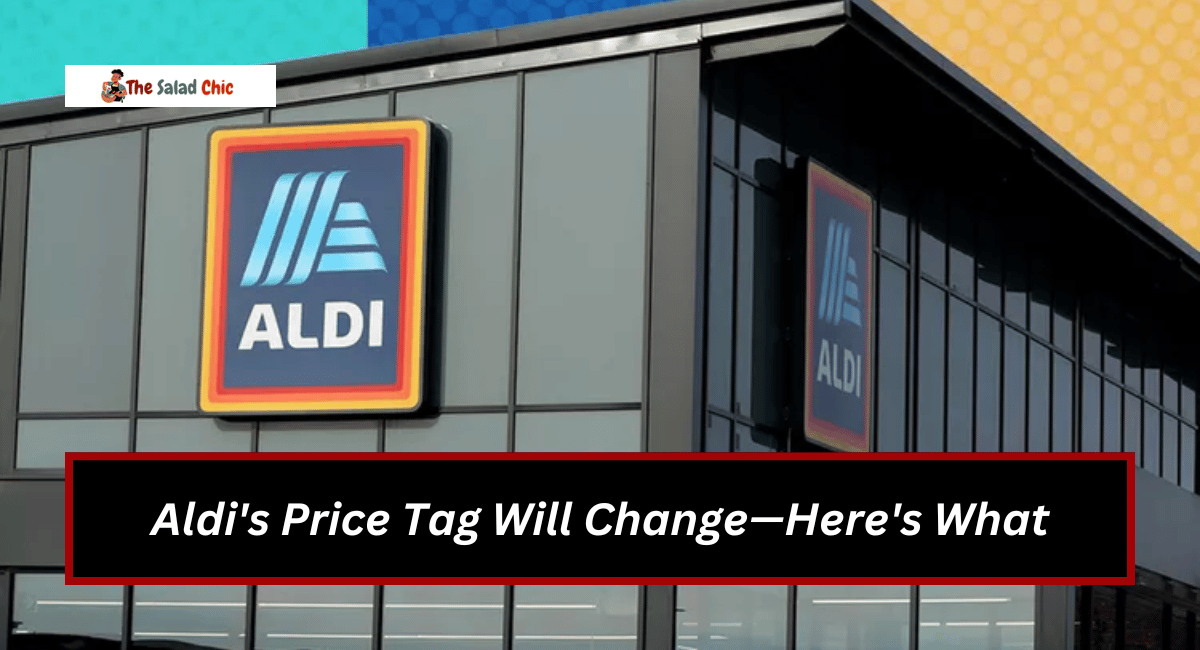As we move into the final months of 2024, technology continues to make its mark on the grocery shopping experience.
We’re seeing automation take over many aspects of daily life—AI is now even present at fast food drive-thrus, big-box stores are introducing receipt scanners at the doors, and Sam’s Club is experimenting with stores with no checkout lines.
While we’re not quite ready for all-digital grocery stores, many retailers are moving towards electronic shelf labels (ESLs) to replace traditional paper price tags.
Walmart has already begun testing these digital labels, allowing store employees to change prices remotely rather than manually swapping out each price tag. The system also helps with restocking, as each digital tag lights up when an item needs to be found, making it easier for workers to locate products on the shelf.
Now, Aldi is following suit by introducing its version of this technology, thanks to a partnership with Instacart’s Carrot Tags. Let’s look at how this system works and what it means for you as a shopper.
What Are Insta cart’s Carrot Tags?
Instacart’s Carrot Tags are designed to make the shopping process easier and more efficient, particularly for Instacart shoppers who fulfill online orders. These digital price tags work alongside a store’s existing ESL system to streamline operations.
One of the key features is the “Pick to Light” option, where the light on the ESL illuminates when an Instacart shopper selects a requested item on their app.
This light helps them quickly locate the product, reducing mistakes and making the order fulfillment process faster and more accurate.
While Carrot Tags mainly benefit Instacart employees, they also have the potential to improve the shopping experience for all customers. These tags can display helpful product information, such as dietary details, special certifications, or promotions, making it easier for shoppers to find what they need.
Aldi’s vice president, Scott Patton, explained that Carrot Tags also make work easier for in-store employees by allowing Instacart shoppers to work more independently. This gives staff more time to focus on other important tasks, such as store operations and customer service.
“Our business model is based on efficiency, and Instacart’s enterprise technologies help us enhance the customer experience while cutting costs,” Patton said.
How Does This Change Impact Dynamic Pricing?
With the rise of ESLs, there’s a growing concern about dynamic pricing—changing the cost of products in real-time based on factors like the weather or time of day. Some grocery chains, like Kroger, have already faced backlash for using this pricing strategy, which some shoppers see as unfair.
Instacart’s Carrot Tags feature “price optimization,” which allows stores to adjust prices quickly and easily based on factors like demand or stock levels. This could be useful for sales and promotions, but whether Aldi or any other store plans to use dynamic pricing.
Kroger, for example, has defended dynamic pricing, arguing that it helps lower prices in areas where customers need it most. Ideally, it would offer flash sales or discounts when necessary rather than raising prices unexpectedly—like surge pricing on a rideshare app.
What Does This Mean for Your Shopping Experience?
Introducing digital price tags and Carrot Tags could change how we shop, especially for those using Instacart services. Here are a few things to expect:
- Faster, More Accurate Order Fulfillment: With the “Pick to Light,” users will find the items they need more easily. This means fewer mistakes and faster deliveries for online orders.
- More Convenient Price Changes: Instead of manually swapping out paper tags, prices can be changed remotely with just a few clicks. This makes it easier for stores to update prices and respond to demand in real-time.
- Helpful Product Information: ESLs can display additional product details, such as dietary information, certifications (like organic or fair trade), and promotions. This could help customers make informed choices about the products they purchase.
- Potential for Dynamic Pricing: While it’s unclear how often dynamic pricing will be used, stores may be able to change prices based on various factors. Whether this leads to discounts or price hikes remains to be seen.
What’s Next for Aldi and Other Retailers?
As more stores embrace technology like Carrot Tags and ESLs, the grocery shopping experience will likely improve. These systems are designed to simplify shopping for customers and employees by reducing mistakes, improving efficiency, and providing better product information.
However, it’s important to monitor how dynamic pricing is used. If implemented too aggressively, it could frustrate shoppers who feel like prices are constantly changing.
Ultimately, these technological advancements could revolutionize how we shop, offering a more streamlined, personalized, and efficient experience. However, as with any new system, it will take time to see how it works.
FAQs
What are Carrot Tags, and how do they work?
Carrot Tags are digital price tags that help Instacart shoppers find items quickly and accurately. When a shopper selects an item, the corresponding digital tag lights up, making the item easier to locate on the shelf.
Will Aldi use dynamic pricing with Carrot Tags?
While Carrot Tags can support dynamic pricing, it’s unclear whether Aldi will use this feature. Dynamic pricing can adjust prices based on demand, weather, or other factors.
How do Carrot Tags benefit in-store employees?
Carrot Tags help Instacart shoppers work more independently, which allows store employees to focus on other tasks, such as customer service and store operations.
What other features do Carrot Tags offer?
Besides lighting up for easier item location, Carrot Tags can display additional product information, such as dietary details, certifications, and promotions, to help customers make informed purchasing decisions.
Are Carrot Tags only for Instacart shoppers?
While the system primarily benefits Instacart shoppers, the added product information displayed on the tags can benefit all customers in the store.
READ MORE: McDonald’s Quietly Restarted a Fan Favorite Dessert

